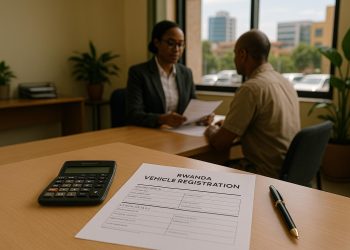Buying a secondhand car in Rwanda can be a smart and affordable decision. However, without proper inspection, you may end up with hidden repair costs or even unsafe vehicles. Whether you’re in Kigali, Musanze, or Huye, knowing what to look for will help you make a confident and safe purchase.
In this detailed guide, we’ll walk you through the essential steps to inspect a used car before buying it in Rwanda, with practical tips and local insights.
1. Do Your Research Before Viewing the Car
Before stepping out to view a vehicle, take time to research. Start by:
- Checking market prices – Compare different models to avoid overpaying.
- Understanding reliability – Some models are known for durability, like the Toyota Corolla, RAV4, and Suzuki Escudo, all of which are widely available in Rwanda.
- Exploring trusted listings – On auto24.rw, you can browse verified secondhand cars and filter options based on price, mileage, and fuel type.
Doing research upfront will save you time and help you avoid unrealistic deals, which may be scams or signs of faulty cars.
2. Check the Exterior and Body Condition
When inspecting the car in person, begin with the exterior. Pay attention to:
- Paintwork – Look for mismatched colors that may indicate accident repairs.
- Scratches and dents – Small cosmetic issues are normal, but major dents can affect resale value.
- Rust – Rwanda’s rainy climate can encourage rust, especially under the car, wheel arches, and door edges.
- Panel alignment – Uneven gaps between doors, bonnet, or boot often point to past accidents.
Tip: Use a flashlight to check beneath the car for hidden rust or damage.
3. Inspect the Tires and Suspension
The tires tell a story about the car’s maintenance. Check for:
- Even wear – Uneven wear patterns could mean poor alignment.
- Tread depth – Tires should have enough grip left; worn-out tires need immediate replacement.
- Suspension test – Push down on each corner of the car. If it bounces more than once, the shock absorbers may be weak.
Popular SUVs in Rwanda like the Nissan X-Trail and Toyota Hilux are built for tough conditions, but only if their suspension is kept in good shape.
4. Pop the Hood – Engine and Fluids
The engine is the most expensive part of the car, so check it carefully:
- Oil – Should be at the correct level, smooth, and not overly dark.
- Coolant – Ensure it’s topped up and clean, not rusty.
- Leaks – Check the ground beneath for oil or water leaks.
- Belts and hoses – Should be intact without cracks.
- Battery – Look for corrosion on terminals.
Start the engine and listen closely. A well-maintained car should idle smoothly without strange knocking or rattling sounds.
5. Test the Interior and Electronics
Step inside the vehicle and check:
- Dashboard – All warning lights should come on briefly during ignition and then go off.
- Seats and upholstery – Excessive wear may suggest higher usage than stated.
- Air conditioning and heater – These are especially important in Rwanda’s mix of hot days and cool nights.
- Electronics – Windows, mirrors, infotainment, central locking, and interior lights should work.
Pro Tip: Check the odometer reading and compare it with wear on pedals and seats. If they look too worn for the mileage claimed, the odometer may have been tampered with.
6. Take It for a Test Drive
Never skip the test drive. It reveals problems you can’t see during a static inspection. Pay attention to:
- Brakes – Should be firm and responsive without squeaking.
- Steering – The car should not drift to one side on a straight road.
- Transmission – Gear changes should be smooth. Delays or jerks indicate trouble.
- Suspension – Drive over bumps and listen for unusual noises.
SUVs like the Toyota Prado and Mitsubishi Pajero should feel solid both on Kigali’s paved roads and Rwanda’s hilly rural routes.
7. Review Paperwork and Ownership History
Even if the car looks perfect, always confirm the documentation:
- Logbook/ownership card – Check the seller’s name matches the ID.
- Service history – Regularly serviced cars are usually more reliable.
- Insurance & technical inspection reports – Ensure they are valid and up to date in Rwanda.
If any documents are missing, it could cause legal issues later.
8. Get a Professional Mechanic’s Opinion
A mechanic’s inspection can save you thousands of Rwandan francs in the long run. They can:
- Use diagnostic tools to check hidden electrical issues.
- Inspect the undercarriage for damage.
- Confirm the true condition of the engine and gearbox.
Final Thoughts
Inspecting a secondhand car before purchase in Rwanda requires patience and a careful eye. From the exterior condition to paperwork checks, each step reduces the risk of making a costly mistake.
For the latest car reviews, maintenance advice, and automotive updates in Rwanda, visit automag.rw.
If you’re ready to start your car search, check out auto24.rw for verified listings of secondhand cars such as the Toyota Corolla, Suzuki Escudo, and Nissan X-Trail.
Frequently Asked Questions (FAQs)
1. What are the most reliable secondhand cars in Rwanda?
Popular choices include the Toyota Corolla, RAV4, Hilux, and Nissan X-Trail. They are known for durability, affordable maintenance, and availability of spare parts.
2. Should I always take a mechanic when buying a used car?
Yes. Even if the car looks fine, a mechanic can spot hidden engine, suspension, or electrical problems that may cost a lot to repair later.
3. How can I avoid scams when buying a car in Rwanda?
Always verify ownership documents, avoid cash payments without receipts, and prefer trusted platforms like auto24.rw where listings are verified.
4. How important is the service history of a used car?
Very important. A car with regular service records is usually better maintained and less likely to develop costly issues.
5. What should I check first when inspecting a used car?
Start with the exterior for signs of accidents, then move to the engine and paperwork before taking a test drive.
6. Where can I find trusted information about cars in Rwanda?
You can follow automag.rw for the latest news, driving tips, and car reviews tailored for Rwandan drivers.





